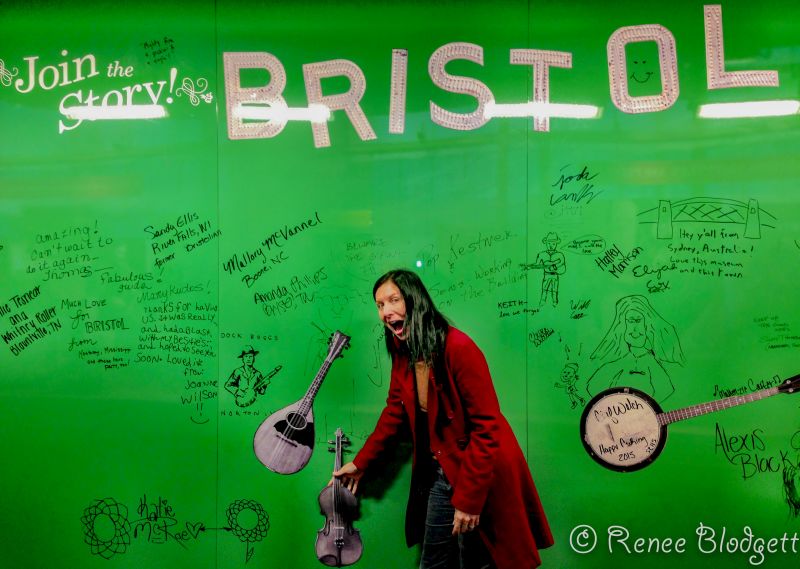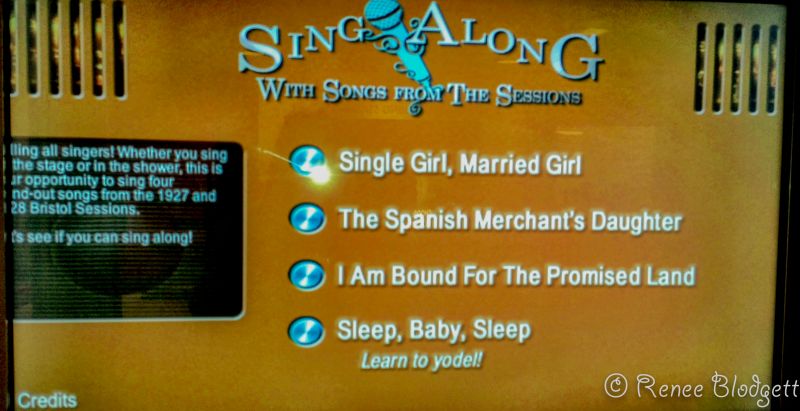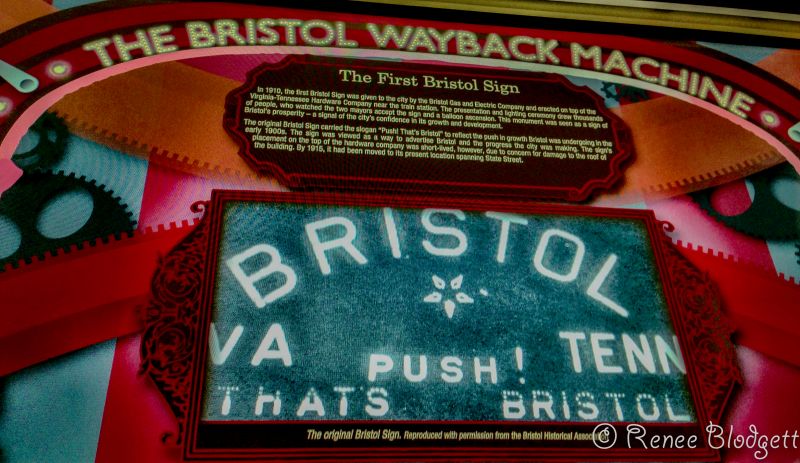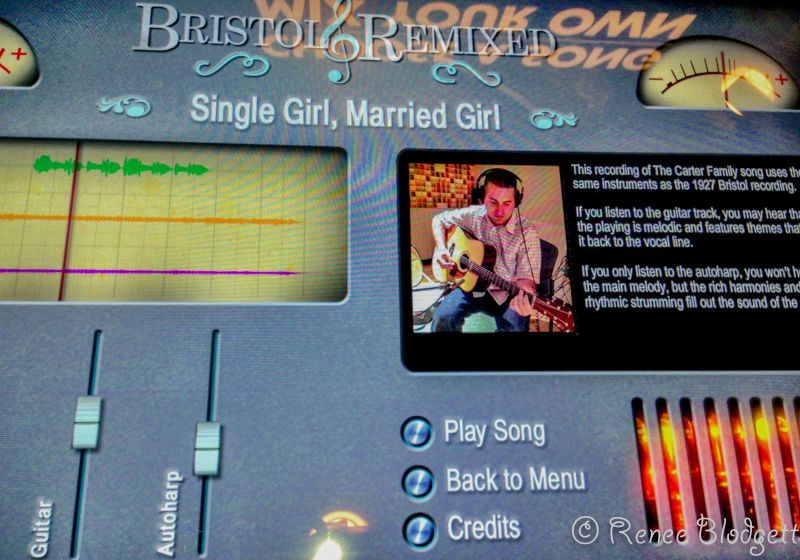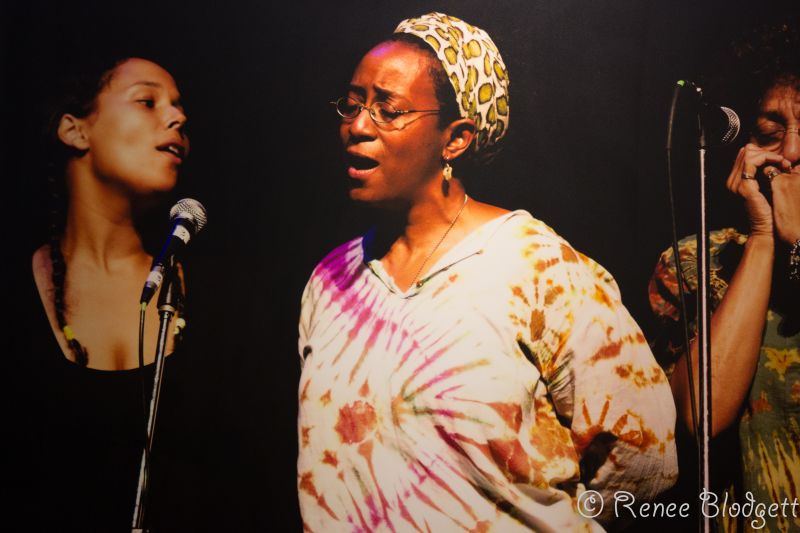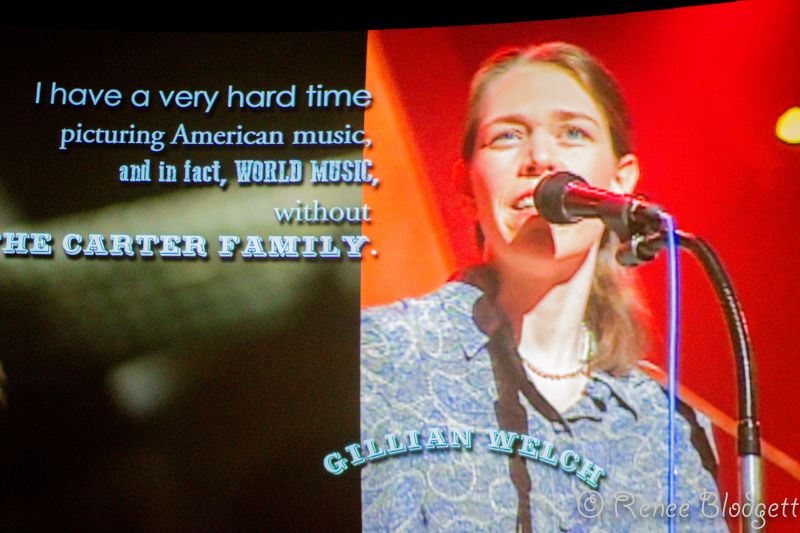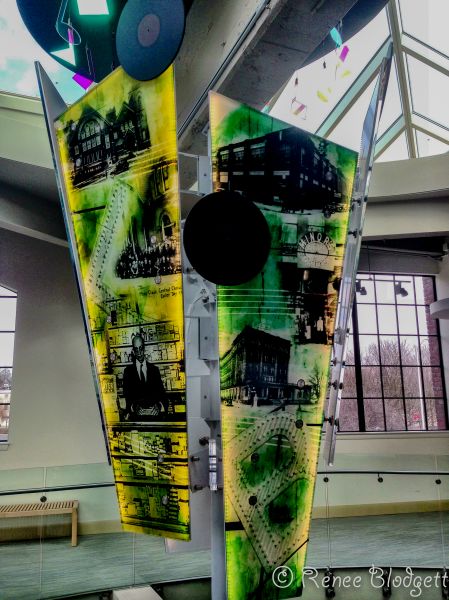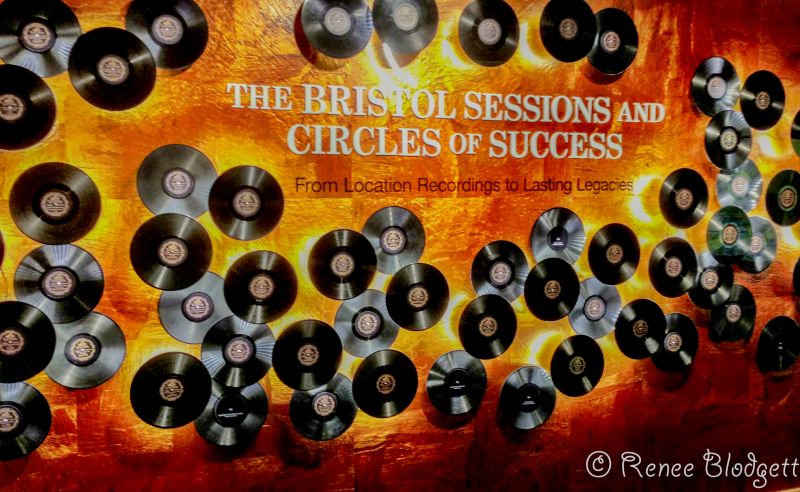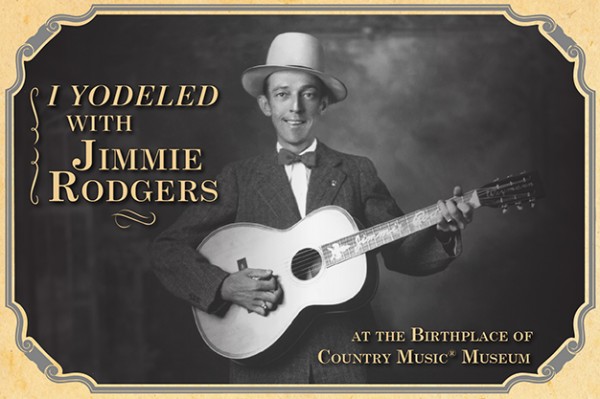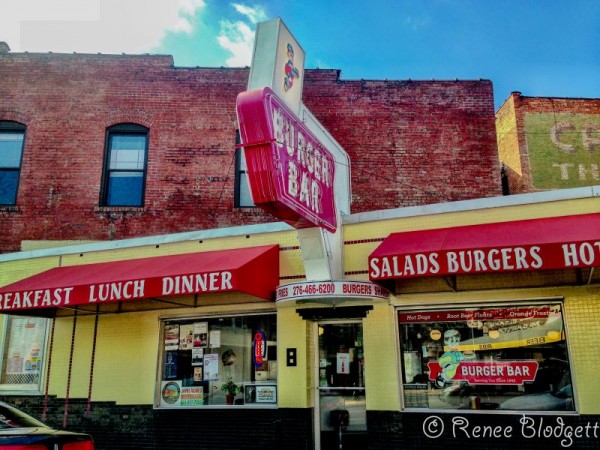In a place you’d least expect it if you don’t have an intimate knowledge of all things “country,” there’s a new museum which only opened last August to celebrate the birthplace of country music. Bristol Virginia, which lies at the edge of the western part of Virginia and Tennessee, boasts a remarkable new non-profit, The Birthplace of Country Music Museum, which is designed to actively document and promote the history of country music.
The museum itself offers a variety of interactive ways you can not only learn about country music history and the original Bristol recordings which made country music take off, but experience it, making it a must stop with children. For example, you can sing along to some of the original recordings from the time and hear yourself in a track after the fact.
You can navigate through their Wayback Machine to hear some of the most historical music known in the world of country, most of which you may not have heard of if you’re under 40.
On the second floor of the museum, you can take a look at the quilt created for the museum by the Bristol TN/VA Chapter of the Embroiderers’ Guild of America. With quilt blocks commemorating blocks from the 1800’s to the present day, artistic appliqué panels, and an adaptation of A. P. Carter’s “Will The Circle Be Unbroken,” this quilt is a beautiful work of art.
You can step into the train depot and learn about early arrivals in country music – musicians who recorded what was to become known as “hillbilly music” before the time of the Bristol Sessions. The “Bound To Bristol” film in the Orientation Theater, narrated by John Carter Cash, sets the stage to experience the story of the Bristol Sessions and beyond. And, for fun, you can remix songs, which is also fun for kids. The mixing station allows you to give those songs new sounds. Turn up the fiddle. Turn down the banjo or a variety therein.
At the “I Was There” station, you can listen to the stories and hear about the impact that the Bristol Sessions had on people who were actually there – Ralph Peer, Maybelle Carter, Ernest V. Stoneman, Clarice Shelor, and Georgia Warren for starters.
Original instruments from the Bristol Sessions are difficult to find and validate, but the museum showcases representatives of the instruments used, as well as those once owned by sessions artists and notables such as Dr. Ralph Stanley, Earl Scruggs, and Bill Monroe—some signed by the artists.
At various listening stations, you will hear how contemporary musicians from Joan Baez to Nirvana have arranged some of these classic songs. There’s also a cool period radio station you can see, which btw, is a real working radio station. WBCM, Birthplace of Country Music Radio, will soon be making live broadcasts here and archived radio shows will also be aired. I love this!
There’s also a performance theater which featured Mike Ferris, Wayne Anderson, an instrument maker and musician from southwest Virginia and Del Jet. The films are mostly educational in nature and are shown at fundraisers to raise money to keep the museum alive.
The foyer sculpture, through a combination of innovative form and vibrant color and image, celebrates the history and heritage of the 1927 Bristol Sessions.
Loaded with history and great music of the time, the Birthplace of Country Music Museum tells the history of the 1927 Bristol Sessions recordings, explores the ways in which sound technology shaped their success and has evolved, and highlights how this rich musical heritage lives on in today’s music.
If you don’t know much about country music, then perhaps you have never heard of the Bristol recordings, which I have been referencing throughout this article. Personally, I knew of the Bristol recordings which took place in 1927, but only barely. If you’re not from the South or a long time country music fan, you may not know of The Carter family and Jimmy Rogers, the songs of which they performed during what became famously known as The Bristol Sessions, which put country music on the map.
The Bristol Sessions, or as some refer to as the Big Bang of country music, were really the first country music recordings that got any acclaim. A bit of history about these sessions to put it all into perspective.
Ralph Peer’s primary goal during the 1927 Bristol Sessions was to produce compelling recordings that sounded modern and would sell well. However, the impact of the Bristol Sessions reached far beyond that original intent. These recordings continue to influence musicians today, especially in bluegrass, revivalist folk music, and rock music. In announcing its newly created National Recording Registry in 2002, the Library of Congress ranked the 1927 Bristol Sessions among the 50 most significant sound recording events of all time.
“These recordings in Bristol in 1927 are the single most important event in the history of country music.” – Johnny Cash
Based on this music heritage, Bristol was designated as the “Birthplace of Country Music” by the states of Tennessee and Virginia, a designation later recognized by the US Congress.
“If you listen to country music, what happened in Bristol is unparalleled.” – Ketch Secor, Old Crow Medicine Show
By 1927, two of the recording companies at the time, Columbia and OKeh, had successfully released hillbilly records, while another record label, the Victor Talking Machine Company (later renamed RCA Victor), was seeking to tap more deeply into this new market. Victor hired producer Ralph Peer in 1926; along with other early producers, Peer conducted location recording sessions throughout the South in the 1920s. All of these sessions produced interesting and sometimes historically important recordings, yet today only one such session is widely known: the 1927 Bristol Sessions, conducted in Bristol, Tennessee-Virginia.
On July 22, 1927, Peer and two Victor recording engineers, Edward Eckhardt and Fred Lynch, set up a temporary studio with the latest recording technology in the Taylor-Christian Hat Company building at 408 State Street. Peer conducted the Sessions between July 25 and August 5. He initiated the recordings with Ernest V. Stoneman, who he knew before the 1927 recordings. Stoneman, an established professional musician, already had several hillbilly hits to his credit, and he collaborated with several family members and friends on the Sessions recordings.
In the following days, a variety of performers arrived in Bristol for the Sessions. Some of these performers, such as the Johnson Brothers and Henry Whitter, had prior connections to Peer, while others were drawn to Bristol by newspaper articles about the Sessions. According to Peer, a story in the Bristol News Bulletin “worked like dynamite and the very next day I was deluged with long-distance telephone calls from the surrounding mountain region. Groups of singers who had not visited Bristol during their entire lifetime arrived by bus, horse and buggy, train, or on foot.”
Artists and select song titles of the 1927 Bristol Sessions include Ernest V. Stoneman with E. Kahle Brewer, Irma Frost, Walter Mooney, and Uncle Eck Dunford, Uncle Eck Dunford with Hattie Stoneman, Ernest Phipps & His Holiness Quartet, Johnson Brothers with Tennessee Wildcats, Blind Alfred Reed, El Watson, B. F. Shelton, Blue Ridge Corn Shuckers, Alfred G. Karnes, The Carter Family, Bull Mountain Moonshiners, Alcoa Quartet, Tenneva Ramblers, Red Snodgrass’ Alabamians, Jimmie Rodgers, West Virginia Coon Hunters, Tennessee Mountaineers and others.
Some of the song titles of the time include Are You Washed In The Blood?, Do, Lord, Remember Me, Skip To Ma Lou, My Darling, The Jealous Sweetheart, Pot Licker Blues, The Wreck Of The Virginian, Pot Licker Blues, Where We’ll Never Grow Old, Train on the Island, Bury Me Under the Weeping Willow, Sleep Baby Sleep, Standing on the Promises and others.
Before the Bristol Sessions, the production of a 78-rpm record involved transferring a music performance to a master disc by means of an acoustic horn, which channeled sound waves to create a vibration pattern on a diaphragm. This pattern was then transcribed by a recording stylus that cut a groove in a soft wax blank “master” disc, which was then used to produce commercial records. This system was flawed in two major ways. First, this acoustic recording system reproduced music that was compromised by a limited dynamic range. Second, a balanced sound on recordings depended heavily upon the precise placement of performing musicians before the horn.
Shortly before the Bristol Sessions, a new type of microphone, manufactured by the Western Electric Company, was introduced, replacing the more primitive acoustic recording process. This change from an acoustic to an electric microphone system yielded records with a more nuanced and balanced sound.
Because the museum is so well curated and interactive, you have an opportunity to hear, see and experience the era in a powerful way. From a booth that allows you to record your own voice singing one of the original Bristol Session songs to the mixing machine mentioned above, it’s a fun and colorful place to take it all in. You will also learn more about the actual instruments and devices which were used at the time and can even create your own digital postcard which you can send to a friend or family member on your way out. (see below for the one I created, which came to me via email after I completed it).
Without the Bristol Sessions, the Carter’s or Jimmie Rodgers may have never been discovered, which would have impacted the future of country music and music history as we know it.
They’re currently working with Carl Jackson on revisiting this very important time in history. The team is producing an album is called Orthophonic Music Revisited, which is slated to come out in the Spring of 2015. Musicians who are contributing to the album include most of the country greats such as Dolly Parton, Cheryl Crow, Amy Lu Harris, Marty Stewart, Ashley Munroe, Brad Paisley and many others. They also plan to launch a working radio station starting in the Spring, which will include online as well.
Music lovers should also know about the annual music festival they hold every September called the Bristol Rhythm Music Festival, where more than 150 performers show up to play across 20 stages.
As you make your way out of town, be sure to grab a classic American burger from the very 1950’s style diner called The Burger Bar on Peidmont Avenue.
Details:
Birthplace of Country Music Museum
520 Birthplace of Country Music Way
Bristol, Virginia 24201
(423) 573-1927
www.birthplaceofcountrymusic.org

Renee Blodgett is the founder of We Blog the World. The site combines the magic of an online culture and travel magazine with a global blog network and has contributors from every continent in the world. Having lived in 10 countries and explored over 90, she is an avid traveler, and a lover, observer and participant in cultural diversity. She is also the founder of the Magdalene Collection, a jewelry line dedicated to women’s unsung voices and stories, and the award-winning author of the bestselling book Magdalene’s Journey
She is founder of Blue Soul Media and co-founder of Blue Soul Earth as well as the producer and host of the award-winning Blue Soul CHATS podcast, that bridges science, technology and spirituality. Renee also founded Magic Sauce Media, a new media services consultancy focused on viral marketing, social media, branding, events and PR. For over 20 years, she has helped companies from 12 countries get traction in the market. Known for her global and organic approach to product and corporate launches, Renee practices what she pitches and as an active user of social media, she helps clients navigate digital waters from around the world. Renee has been blogging for over 16 years and regularly writes on her personal blog Down the Avenue, Huffington Post, BlogHer, We Blog the World and other sites. She was ranked #12 Social Media Influencer by Forbes Magazine and is listed as a new media influencer and game changer on various sites and books on the new media revolution. In 2013, she was listed as the 6th most influential woman in social media by Forbes Magazine on a Top 20 List.
Her passion for art, storytelling and photography led to the launch of Magic Sauce Photography, which is a visual extension of her writing, the result of which has led to producing six photo books: Galapagos Islands, London, South Africa, Rome, Urbanization and Ecuador.
Renee is also the co-founder of Traveling Geeks, an initiative that brings entrepreneurs, thought leaders, bloggers, creators, curators and influencers to other countries to share and learn from peers, governments, corporations, and the general public in order to educate, share, evaluate, and promote innovative technologies.

